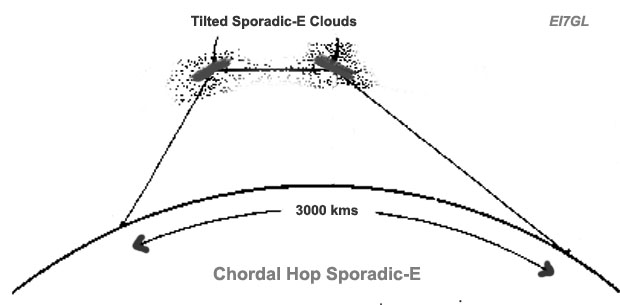Every day for the last few months, I have left the radio listening on the WSPR frequency of 28.1246 MHz and I feed the spots up to WSPRnet. Most days, I don't even check what the radio heard, I just leave the radio on so that others can see how far their 10m WSPR transmitters are reaching.
I had a look today at what I heard for the last 5-weeks which is from the 26th of October to the 29th of November 2023. Considering that we're near the peak of the sunspot cycle, this post gives an idea of what what the band was like.
Totals & Distribution... In total, I heard about 1200 individual stations on 28 MHz during the 5-week period. This is a huge change from a few years ago when I would hear relatively few. It's not that conditions just got good but I think a lot of WSPR users came up to 28 MHz from the lower bands.
There are a few false reports in the 1200 from strange callsigns out in the middle of nowhere but the vast majority of them are genuine.
The map above shows the distribution and it's obvious most of the WSPR activity is centred on North America and Europe. South America is surprising low and there is almost nothing from Africa outside of South Africa. There is however a good amount of activity from Australia.
DP0GVN... I heard the German Antarctic research station DP0GVN a total of 47 times during the 5-weeks. The best times seem to be in the afternoon but I heard it as early as 07:48 UTC and as late as 18:48 UTC.
Japan???... Where is everyone? I know there have been paths from Ireland to Japan on 28 MHz for people using FT8 but I heard nothing on WSPR. I checked some of the reports for some of the Australian stations and these seem to confirm that there seems to very little interest in WSPR in Japan.
North America... This is the distribution of stations in North America. For the USA, this pretty much mirrors the level of activity and population in the country. You can draw a line north from Houston, Texas and a lot of the radio amateurs are to the east of that.
From Ireland, it's pretty easy to hear the eastern half of the USA so it's nice to see all of those more difficult northerly paths to the west coast. This is especially true when I start seeing those VE6's and VE7's in the north-west.
I do have one report of hearing KL2OF in Alaska but I think it was bogus. I only heard it once, QRZ says the call has expired and the signal was only sent for one 2-minute period.
I'm not even sure if a WSPR path is likely to Alaska from Europe considering the polar flutter on the signal at 28 MHz?
The UK on Backscatter... There are quite a number of stations in England using WSPR on 28 MHz and most of these stations shown above are about 400-700kms from my location. This is too short for single hop F2 layer and they are in my 'skip zone' according to usual propagation textbooks.
There might be some Sporadic-E in there but it's likely the vast majority are F2 layer backscatter. The 10m signal is being reflected off distant objects like mountains and ocean waves 1000's of kms away. It's certainly not aircraft scatter.
France - Où êtes-vous???... The map above shows the distribution of signals from western Europe. WSPR is popular in the Netherlands and Germany but where is all the WSPR activity from France???
It doesn't seem to be just a lack of transmitters either. There seems to be a equal shortage of people in France listening on the band and reporting.
Australia on 10m... It's always nice to see the 28 MHz WSPR signals from Australia coming through and I heard 29 VK stations in the 5-week period. For whatever reason, I didn't hear any VK7 stations from Tasmania.
As can be seen from the chart below, most of these stations are about 15,000 to 17,500 kms from my location.
Note the Signal to Noise reports (SNR). Most are these signals are buried in the noise and below what can be heard by the human ear. That's the magic of the WSPR mode.
WSPR seems to have a niche following in Australia and those guys are doing some interesting work investigating propagation paths on the 50 MHz and 144 MHz VHF bands.
Polar Stern... Nearly all of the WSPR signals are from stationary stations but a few are on the move. The map above shows my reception reports of the German polar research ship Polar Stern which uses the call DP0POL. It went through the English Channel a few weeks ago and made it's way down to South Africa.
Some days, propagation is good and I get a string of reception reports resulting in a blurred line. Some days, I heard it only a few times if t all.
 |
| Path of pico-balloon AF6IM |
Pico-Balloon AF6IM... The very small balloon AF6IM was launched from California a number of weeks ago and it has gone around the world at least once. See my previous post.
The map above shows where I heard it over the last few weeks.
In summary... As a beacon mode, WSPR won't be of interest to everyone but it's nice to see a good level of interest in the mode especially on the 28 MHz band.
Just for reference, I was using a simple CB type half-wave antenna for this test so nothing special on my side.







































